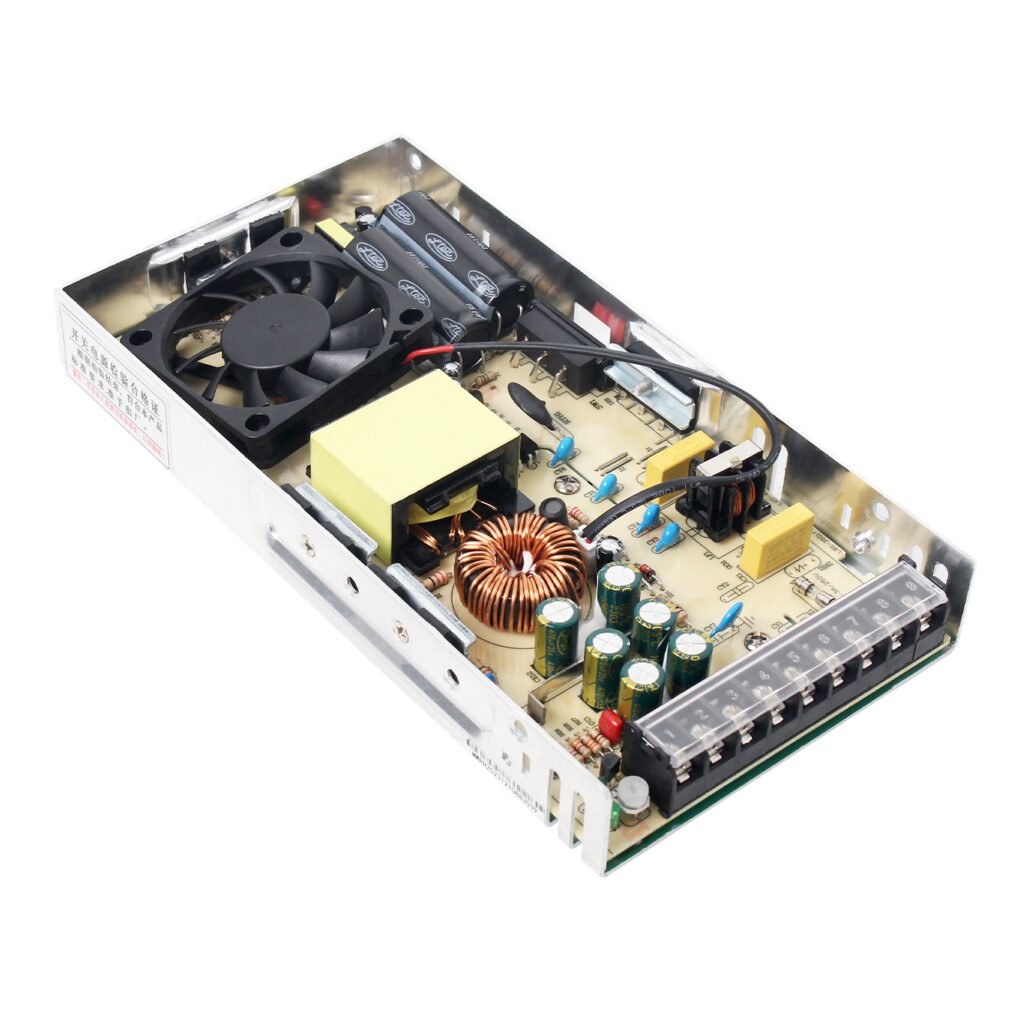Transformer switching power supply, a pivotal component in switching power supplies, is responsible for voltage conversion and isolation. Here’s a detailed breakdown of its concepts, workings, structure, characteristics, applications, and future developments in English:

Basic Concepts
A transformer switching power supply utilizes a transformer within a switching power supply system to convert and isolate voltage levels. It operates based on the principles of electromagnetic induction, with high-frequency switching actions to induce the desired output voltage.
Working Principle
- Input Rectification and Filtering: The input AC voltage is first rectified into DC voltage and then filtered to remove voltage fluctuations, resulting in a smoother DC voltage.
- High-Frequency Switching: The rectified DC voltage is then subjected to rapid switching by high-frequency switching elements (e.g., MOSFETs), generating high-frequency pulse voltages.
- Transformer Conversion: These high-frequency pulse voltages are applied to the primary winding of the transformer, inducing a corresponding voltage in the secondary winding through electromagnetic induction, thereby achieving voltage conversion.
- Output Rectification and Filtering: The induced voltage is rectified back into DC and filtered to remove high-frequency noise and fluctuations, resulting in a stable output voltage.
Structure and Characteristics
- Structure: A transformer switching power supply typically consists of a core, a primary winding, and a secondary winding. The core serves as the magnetic circuit, while the windings are wound around the core to facilitate voltage conversion through electromagnetic induction.
- Characteristics:
- High-Frequency Operation: Operating at high frequencies significantly reduces the transformer’s size and weight.
- High Efficiency: Leveraging high-frequency switching technology, transformer switching power supplies often achieve conversion efficiencies exceeding 80%.
- Isolation: The transformer provides electrical isolation between the input and output, enhancing safety.
- Wide Voltage Regulation Range: By adjusting the switching element’s duty cycle or the transformer’s turns ratio, the output voltage can be easily regulated.
Applications and Future Developments
Transformer switching power supplies are ubiquitous in electronic devices, including computers, communication equipment, and household appliances. As electronic technology advances, the performance requirements for switching power supplies continue to escalate. Future developments in transformer switching power supplies will likely focus on achieving even higher frequencies, efficiencies, smaller sizes, and lighter weights.
In summary, transformer switching power supplies play a crucial role in modern electronics, enabling efficient and safe voltage conversion. Ongoing technological innovations will further enhance their capabilities and expand their applications.
